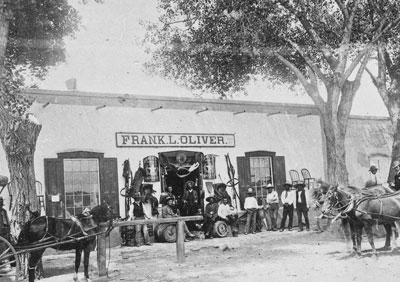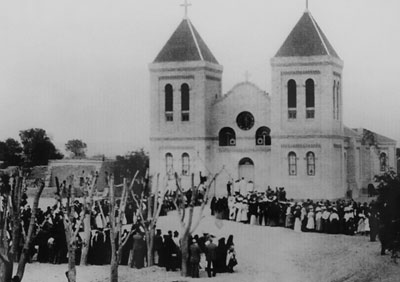
History of Mesilla
 The history of Mesilla is a complex one and there are many accounts of how things actually happened. What we know for sure is that hundreds of years later, Mesilla has maintained its quaint, charming appeal of long ago.
The history of Mesilla is a complex one and there are many accounts of how things actually happened. What we know for sure is that hundreds of years later, Mesilla has maintained its quaint, charming appeal of long ago.
In the early to mid 1800s, the Camino Real Trail that traveled from Chihuahua to Santa Fe, and the Butterfield Stagecoach from San Antonio to San Diego, turned the region into a hub for commerce and transportation in the region. At this point, the area of Mesilla was still uncharted territory; not many settlers had yet made it their home.
It was the Treaty of Guadalupe Hidalgo in 1848 that attracted early settlers to Mesilla and thus began populating the town. It was established as a colony by the early 1850s, around the time that the United States and Mexico settled the boundary dispute that arose from the Treaty of Guadalupe Hidalgo. The settlement, known as the Gadsden Purchase, was effectuated on November 16, 1854 in Mesilla by taking down the Mexican flag and raising the United States flag.
 In late July 1861, 300 Texas troops led by Confederate Col. John Baylor captured Fort Fillmore, just outside of Mesilla. After defeating the Union troops Baylor named the town of Mesilla as the capital of the new Confederate Territory of Arizona. The Civil War ended in Mesilla in 1862 after Colonel Baylor and the confederate troops retreated to Texas. By the 1870s Mesilla was in her prime and there were several stores, doctors, lawyers, carpenter shops as well as other establishments. However, the hustle and bustle of Mesilla not only attracted businessmen and commerce, it also attracted outlaws like Billy the Kid. It was in Mesilla that the Kid was tried and sentenced to death by hanging in 1881.
In late July 1861, 300 Texas troops led by Confederate Col. John Baylor captured Fort Fillmore, just outside of Mesilla. After defeating the Union troops Baylor named the town of Mesilla as the capital of the new Confederate Territory of Arizona. The Civil War ended in Mesilla in 1862 after Colonel Baylor and the confederate troops retreated to Texas. By the 1870s Mesilla was in her prime and there were several stores, doctors, lawyers, carpenter shops as well as other establishments. However, the hustle and bustle of Mesilla not only attracted businessmen and commerce, it also attracted outlaws like Billy the Kid. It was in Mesilla that the Kid was tried and sentenced to death by hanging in 1881.

With the booming commerce and constant traffic, Mesilla was actually at one time the largest U.S. town between San Antonio and San Diego. But, the once thriving town, and the obvious choice for a railroad, was stunted when, in 1881, it was decided that the incoming railway would be constructed through the neighboring town of Las Cruces instead.
Today, many of Mesilla’s residents are direct descendants of its early settlers. The town and its people are a true representation of the community’s Native-American, Spanish, Mexican and Anglo-American heritage.









